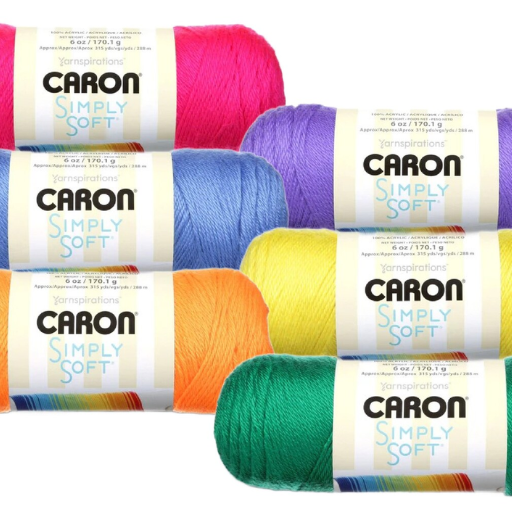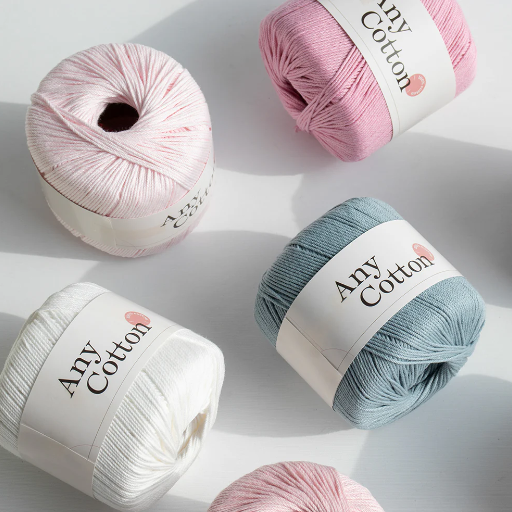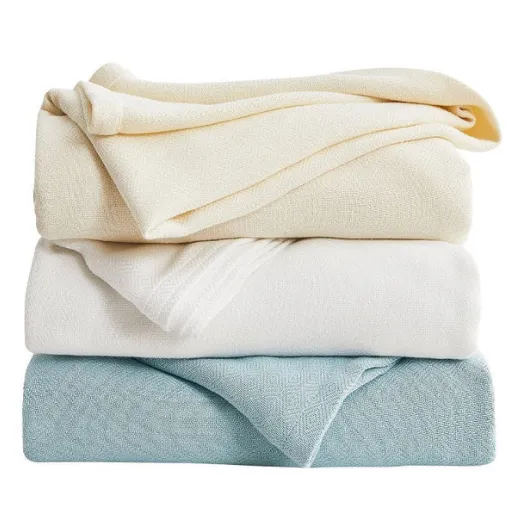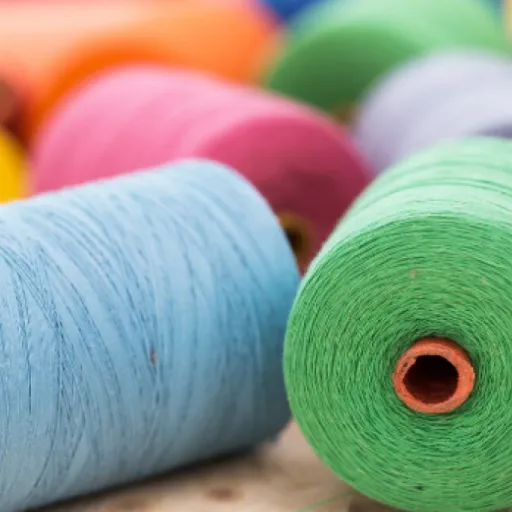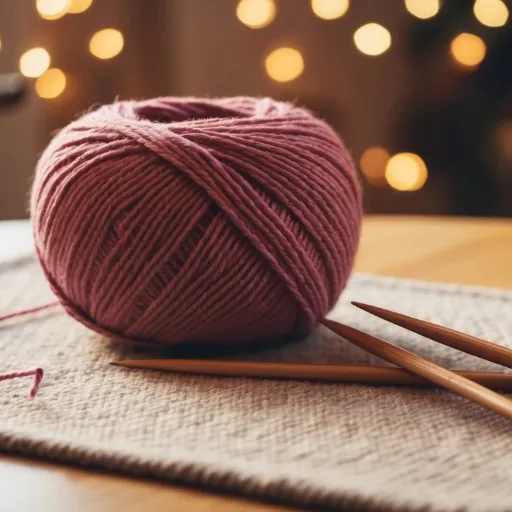The first time you knit a scarf, the process is exciting and rewarding. Attempting a new hobby like this comes with the same question all beginners ask: how much time will it take? Yarn type, the needles chosen, pattern complexity, and the knitter’s skill are all factors that affect the time to completion. This guide is perfect whether you are brand new to knitting or are searching for a project simple enough to improve your knitting techniques, as it will help you set achievable goals and offer tips to ease and enhance the experience. By the conclusion of this guide, you will have a warm scarf you’ve made on your own, and you will have a better appreciation for the time required and how to adjust your method to align with your speed and preferences. Let’s solve this!
Factors Influencing Time to Knit a Scarf
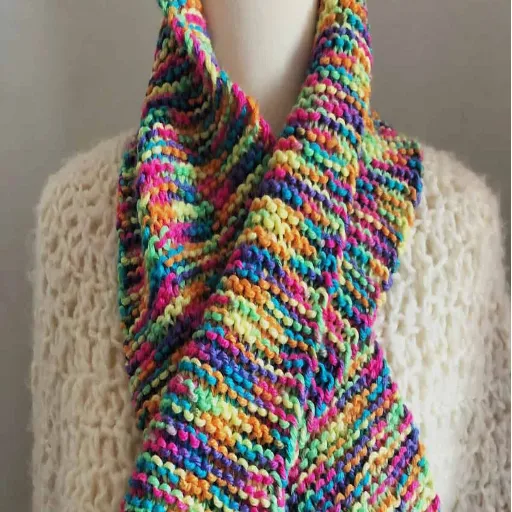
Yarn Type
Bulky or thick yarn completes projects faster since fewer stitches are needed to cover an area. In contrast, fine or thin yarn takes longer to produce.
Needle Size
Smaller needles produce tighter, more time-consuming stitches. Larger needles produce looser stitches, thereby speeding up the project.
Pattern Complexity
Patterns that are simple to finish, such as garter or stockinette stitches, take less time compared to intricate patterns like lace or cable.
Scarf Length and Width
The greater width and length of a scarf result in a longer knitting time. This is because more rows and stitches are necessary.
Knitting Speed
The time required to complete a knitting project depends on the individual’s skill and knowledge. A novice certainly requires more time, whereas a proficient knitter completes the project at a faster pace.
Dedicated Time
The amount of time you allocate to knitting each day is crucial to completing the scarf. The more frequent and regular the knitting sessions are, the faster the knitting will be completed.
Yarn Type and Its Impact on Speed
The choice of yarn has a significant impact on how quickly you can knit. Thicker, bulkier yarns are great for quick knitting projects, as fewer stitches are needed to cover the same area. Likewise, fingering or lace weight yarns are thinner and require more stitches and finer needles, which can slow down the knitting process. Similarly, smooth, even yarns of any given weight can be easily slid through the hands and needles. However, scratchy or fuzzy yarns, such as mohair, can be challenging to manipulate, slowing down the knitting process and possibly requiring more effort to handle. The selection of yarn for a project is determined by the desired final product and the time needed for completion.
Needle Size: Choosing the Right Tools
Choosing the right type and size of needle is paramount when knitting. Think of the kind of yarn you want to use. Imagine the project you want to create. Large needles will yield loose, flexible stitches, ideal for scarves, blankets, or any other item that requires a soft drape. Small needles will produce tight stitches, providing structure and durability. This is ideal for intricate patterns, such as those found in socks and hats. The latest technology indicates a significant amount of traffic being directed to “how to match needle size and yarn weight.” For example, medium-weight yarns (e.g., worsted) work best with US sizes 7-9. Finer yarns require smaller needles, and bulkier yarns require bigger needles. Always check the yarn label. Use it as a guide, but modify it as needed to suit your specific tension or project requirements.
Pattern Complexity: Simple vs. Intricate Designs
Reflecting on queries from knitters, I’m sure many of you wonder if it’s better to use complicated or straightforward designs to start knitting projects. Using simple designs to start is often the most effective strategy, especially for first-time users. These simple designs utilize basic stitches, such as garter or stockinette, with minimal shaping or additional details. New knitters benefit from focusing on simpler designs, as it helps them develop the necessary skills and confidence to use knitting tools and techniques effectively. In contrast, advanced knitters are the only ones who can handle intricate designs, because their cables or lace require much advanced skills, patience, and great attention to detail. Although it personally depends on your ease and ability, a good practice grounded in evidence is to start with simpler designs and proceed to more complicated ones in knitting.
Types of Scarves and Their Complexity
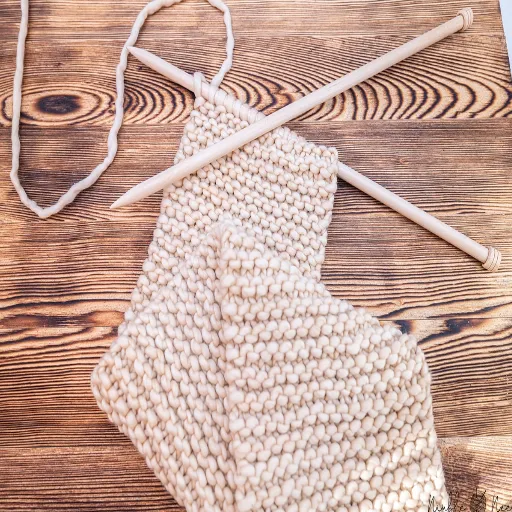
Garter Stitch Scarves
The easiest scarves to knit are those made with the garter stitch pattern, making them perfect for beginners. These scarves help develop fundamental knitting competencies, as they are garter stitch knit scarves, a simple knit stitch pattern.
Ribbed Scarves
At the intermediate level, knitting raffles is a step above simply knitting scarves. These scarves are created using knit and purl stitches, which give them a flexible and textured appearance.
Cable Knit Scarves
With an advanced level of knitting, scarf cable knitting requires advanced stitching and the use of knitting tools, such as a cable needle. This advanced level of knitting is the most complex and requires the Braille patterns to create a beautiful scarf.
Lace Scarves
The delicate designs require an advanced level of knitting. These projects require advanced-level knitting and are very detailed, and require a lot of precision.
Multi-Color or Patterned Scarves
Multi-colored patterned scarves, such as striped scarves, masked scarves, or fair Isle scarves, are advanced and require the use of several different colored yarns.
All the different types of scarves present varying challenges, allowing knitters to learn and grow at a pace that suits them best.
Simple Scarves: Quick Options for Beginners
Starting with simple scarves helps beginners make small accessory pieces to practice on. They are low-maintenance and utilize simple techniques, such as garter stitch—knitting every row—and stockinette stitch—knitting one row and purling the next. The scarves require minimal shaping and utilize only one type of yarn, making the project accessible to beginners. In fact, chunky yarns and big knitting needles can make the project even easier, as the progress will be faster, offering a sense of accomplishment to beginners. Besides facilitating the hands-on practice of simple knitting techniques, simple scarves provide the first glimpse into knitting’s endless possibilities and joy.
Intermediate Scarves: A Step Up in Complexity
Intermediate scarves help knitters try advanced techniques and patterns. In addition to scarves, knitters can also try other knitwear, such as sweaters and mittens, to expand their skills. These knitwear projects can incorporate elements such as cables, colorwork, or even lace stitches, helping hobbyists refine their skills in knitwear design. Such patterns can beautifully showcase the skills that can be combined to create a piece of sophisticated knitwear. Patterns of knitwear at this stage can employ a more in-depth approach, such as a stitch chart or a set of written directions, which can be interesting to solve. Using multiple colors, textured yarns, or a woven yarn blend can add an artistic touch to each scarf, ensuring that no two scarves are alike. Intermediate projects allow knitters to further develop their skills and creativity. In addition to the scarves, the same technique can be applied to other knitwear, such as gloves and sweaters.
Advanced Scarves: Challenging Projects for Experienced Knitters
Advanced scarf projects offer experienced knitters a delightful opportunity to refine their craftsmanship with creative flair. The projects may feature brioche knitting, complex lace, or cable work, and may require expertise in detailed pattern reading, handling multiple colors, and finesse finishing methods. Moreover, knitters often use fine materials, such as cashmere or silk blends, to ensure the product’s luxury and durability. Not only does completing such a challenging project sharpen one’s skills, but it also yields a creation that showcases genuine artistry and commitment.
Average Time Estimates Based on Skill Level
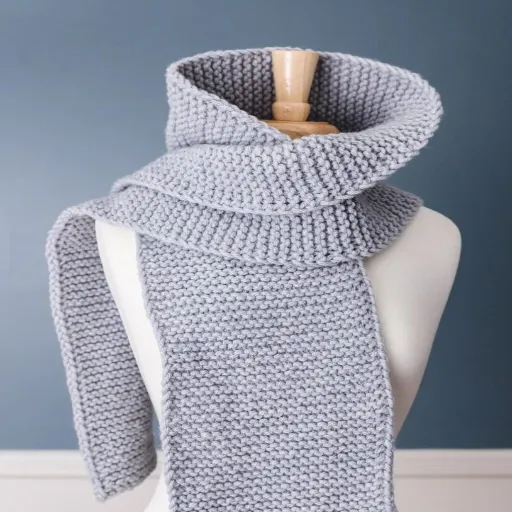
| Skill Level | Project Type | Time Required |
|---|---|---|
| Beginner | Simple items, such as scarves or dishcloths | 5-10 hours |
| Intermediate | Sweaters and patterned blankets | 20-40 hours |
| Advanced | Complex designs, such as lace shawls or multicolor cardigans | 50+ hours |
Note: While these numbers provide a general idea of the time required, the amount of work can vary significantly depending on the knitter’s pace, their familiarity with the particular techniques needed, and the overall size of the project.
Beginners: Time Estimates for Simple Garter Stitch Scarves
It usually takes between 10 and 20 hours for beginners to knit a simple garter stitch scarf. This time can vary based on the scarf’s width and length, the yarn’s thickness, and the individual’s knitting speed. For those new to knitting, using chunky yarns and thick needles can help speed up the process, thereby minimizing the time necessary to complete the project. Beginners can also benefit from starting with slimmer scarves, as they help improve their confidence and precision in maintaining uniform stitches.
Intermediate Knitters: Challenges and Time Estimates
Projects usually become more intricate at the intermediate stage, where a knitter must attempt cable knitting, lacework, or even colour knitting. Such knitting patterns tend to require more concentration and accuracy, resulting in longer knitting times. For example, a medium-sized sweater with cables can take from 40 to 60 hours to knit, depending on the design and the knitter’s pace. A common struggle at this stage is maintaining even tension while working with multiple strands of yarn or intricate stitch patterns. That said, gaining proficiency in this dramatically improves what an intermediate-level knitter can do, setting them up for even more challenging projects.
Advanced Knitters: Balancing Speed and Precision
Expert knitters often juggle two computations: the velocity and quality of work. Dress patterns featuring an abundance of lace, intricate cables, or custom designs that require a detailed understanding of patterns and materials are the ultimate frontier of project types. Among master knitters, there is a burning question: What devices and methods can improve the velocity and the precision? According to the latest research, ergonomic knitting needles and stitch markers are the best. Additionally, finger movement is reduced with Portuguese knitting, and pattern software increases the speed of achieving an exquisite level, reduces the amount of work required, and maintains the desired quality.
Tips for Speeding Up Your Knitting Process
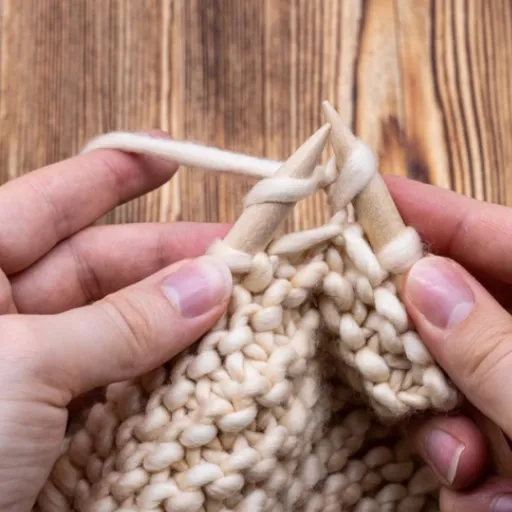
-
Use Ergonomic Tools
Purchase ergonomic knitting needles that alleviate hand strain and facilitate better movement. Stitch markers not only preserve precision but also trim the time spent rectifying mistakes.
-
Master Efficient Techniques
Speed can be dramatically enhanced with methods such as Portuguese knitting, which requires wrapping yarn around the neck or a pin to reduce hand movement.
-
Work on Simple Patterns
Simple and repetitive patterns are preferable because complex fibres require more time and focus.
-
Improve Yarn Management
Use a skein holder or yarn bowl to keep yarn from tangling. Proper yarn handling eliminates pauses in knitting.
-
Practice Regularly
Steady practice enhances muscle memory and the methodical speed of knitting over time.
-
Knitting in Bulk
When handling several items, complete like sections in a row. For example, finish all sweater parts before knitting the following item.
Choosing the Right Tools: Yarn and Needles
Selecting the right yarn and needles is crucial when it comes to knitting. For one, the yarn should be of the right material, weight, and fibers. Yarn made from natural fibers, such as wool and cotton, can be warm and durable, whereas synthetic yarns, like acrylic, are easier to care for and less expensive. Also, ensure you use the correct yarn weight. For instance, light and delicate yarn is suitable for intricate lace, while warm and heavy yarn is perfect for blankets.
Needles are just as important. Different materials straddle the balance between grip and smoothness, ranging from bamboo to metal to plastic. For one, bamboo needles are well-loved for being beginner-friendly and preventing slips and accidents; on the other hand, metal needles can be used to knit at a faster speed thanks to their slick surfaces. Moreover, confirm that the needles are the correct size for the yarn weight and are suitable for the project to achieve the desired gauge and finish.
Practice Consistency for Faster Knitting
Improving knitting speed demands steady focus and effort on your part. Establishing an exercise schedule enables the strengthening of your muscle memory, allowing your hands to grasp repetitive movements more quickly. As the task progresses, less effort is required to smooth away the edge previously needed for each stitch. Furthermore, maintaining an ideal hand position and controlling tension enables one to shift seamlessly from one stitch to another. To develop these skills, gain confidence, and build a portfolio, scarves and dishcloths serve as excellent practice pieces. Committing to constant practice and mastery will increase your skill and the accuracy of your knitting.
Setting Realistic Goals to Stay Motivated
Maintain motivation by setting manageable and practical aims. Focus first on dividing big goals into smaller, achievable goals that can be accomplished within a short period. This method fosters progress as every small goal achieved contributes to a sense of achievement. The recent search data indicate that motivation-related phrases, such as “how to stay motivated” and “setting achievable goals,” have been consistently in use, signifying a need for attainable clarity. For ease of adjustment and tracking, set SMART goals, which are specific, measurable, achievable, relevant, and time-bound. Keep in mind that marking small celebrations during the journey helps maintain a good mood and stimulates ongoing productivity.
Common Challenges and How to Overcome Them
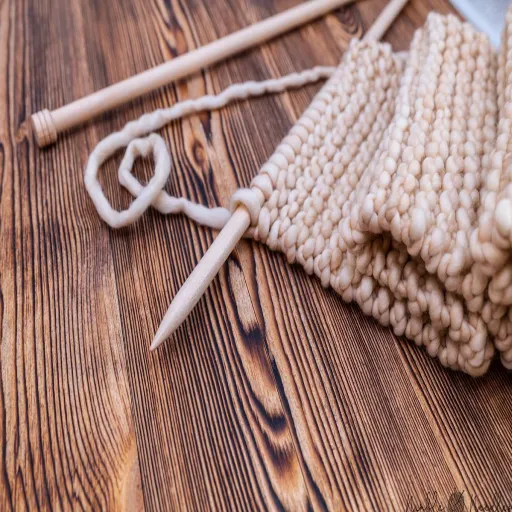
| Challenge | Solution |
|---|---|
| Procrastination | Procrastination often occurs when there’s too much to deal with or when you’re unsure of how to begin. A practical approach to dealing with this is to divide the tasks into smaller chunks and assign a deadline to each one. A prioritized to-do list can go a long way in keeping you on track. |
| Lack of Motivation | Whenever motivation dips, progress is impacted. Reaffirm your objectives and the reasons behind their significance to you. Surround yourself with positive people and celebrate the small milestones with enthusiasm. |
| Fear of Failure | Fear of failure is often why people do not take the first step. Alter your mindset to view failures as stepping stones to valuable lessons. Concentrate on achieving a milestone, however small, instead of aiming to be flawless. |
| Distractions | For consistency, everyday distractions need to be tackled. Silence your phone and turn off irrelevant notifications, designate a specific area for work, and carve out set periods for focused work. |
| Burnout | Continuing relentlessly without rest can lead to burnout. Schedule rest intervals, practise self-care, and strive to have a well-balanced work and personal life. |
Tension Issues: Maintaining Even Stitches
Stitching evenly can pose a challenge, particularly for those new to the craft. A combination of minor errors—whether in the way the hands move, how the thread is put on the needle, or the tools being used—can lead to variations in tension. For a more refined and even stitch, the thread must be set correctly in the sewing machine or other stitching tool, and the thread, needle, and fabric should be complementary in terms of type and size. Consistent effort must be made to cultivate a pace and cadence that requires a relaxed hand working at a steady distance. When using a sewing machine, ensure that the tension settings match the type and thickness of the fabric being worked on. Just as with many other skills, a small amount of regular practice with a disciplined approach pays off in the long run, leading to an increase in stitch uniformity. This, in turn, is rewarded with an outcome that looks much more refined and professional.
Dropped Stitches: Fixing Mistakes Without Stress
While dropped stitches can feel intimidating, they are more manageable than they initially appear. The first reaction upon discovering a dropped stitch is to stop and refrain from sewing further to prevent additional damage. Next, grab a sewing needle or a small crochet hook and gently work on any loose stitches, helping them slip back into place. With machine sewing, dropped stitches often indicate a problem with the upper thread or bobbin thread. Ensure that you check and correct the threading. Checking for and replacing the needle also cannot hurt, as an improper or dull needle for the fabric is another common reason for dropped stitches. You can resolve dropped stitches promptly with a little determination and organization, allowing you to continue with your project without hesitation.
Staying Motivated: Engaging with the Knitting Community
The knitting community provides me with ongoing motivation. Meeting other knitters on social media, in local crafting groups, and online forums gives me a chance to exchange ideas, ask for help, and celebrate small victories. The amazing projects other knitters share always fuel my inner artist.
I look forward to our knit-alongs and group challenges because they make me feel connected to others, and they keep my passion alive.
Reference Sources
Below are three industry-specific resources that can help you substantiate your article on How Long Does It Take to Knit a Scarf as they provide information on knitting craftsmanship and investigations associated with it:
Knitting from the Landscape: What Are the Interrelations Between Maker, Material, and Landscape?
This study examines the relationship between knitting and other crafting practices, with a focus on the materials used and the time and effort invested in knitting projects.
The Loving Stitch: A History of Knitting and Spinning in New Zealand
The book is rich in historical context and anecdotal information on knitting, including the time required to complete various knitting projects and the intricate details and complexities that each entails.
A Fieldwork Story Told Through Knitting
In this work, knitting is considered a reflective practice, involving a prolonged process and considerable time invested in creating items such as scarves.
Frequently Asked Questions (FAQs)
How long does it take to knit a scarf for beginners?
The time it takes to knit a scarf for beginners can vary significantly based on the complexity of the scarf pattern and the type of yarn used. A simple scarf pattern using bulky yarn can be completed in as little as 5-10 hours, while a more intricate design with thinner yarn may require a longer time.
What factors affect how long it will take to knit a scarf?
Several factors can affect the time it takes to knit a scarf. These factors include the weight of the yarn, the number of stitches required, your knitting speed, and the chosen stitch pattern. For example, using super bulky yarn will typically allow you to finish faster than using a thinner yarn.
How can I calculate how long it will take to finish a scarf?
To calculate how long it will take to finish a scarf, consider the total number of stitches in your scarf pattern, your knitting speed (stitches per hour), and the type of yarn. For example, if you’re using worsted-weight yarn and knitting at a rate of 20 stitches per minute, you can estimate the total time based on your pattern’s stitch count.
What type of yarn is best for knitting a scarf?
The best type of yarn for knitting a scarf depends on the desired outcome. Bulky yarn is great for quick projects, while cotton yarn offers a lighter feel. Worsted-weight yarn is versatile and commonly used for scarf patterns, making it a good choice for beginners.
How many stitches do I need to knit a scarf?
The number of stitches needed to knit a scarf depends on the width of the scarf you want to make and the yarn weight. A wider scarf will require more stitches, while a basic scarf may have around 30-40 stitches across for a comfortable width.
Can I use a free knitting pattern to knit my first scarf?
Yes, many free knitting patterns are available that are perfect for beginners looking to knit their first scarf. These patterns often feature simple stitch techniques, making it easier to learn as you go.
How long will it take to knit a long scarf?
Knitting a long scarf will take longer than a shorter one, especially if you are using a thinner yarn and a complex stitch pattern. On average, a long scarf can take anywhere from 10 to 20 hours to complete, depending on your skill level and the materials used.
Are there different ways to knit a scarf?
Yes, there are many different ways to knit a scarf. You can experiment with various stitch patterns, yarn types, and techniques, such as the garter stitch, stockinette stitch, or ribbing. Each method will yield a unique look and feel for your knitted scarf.











